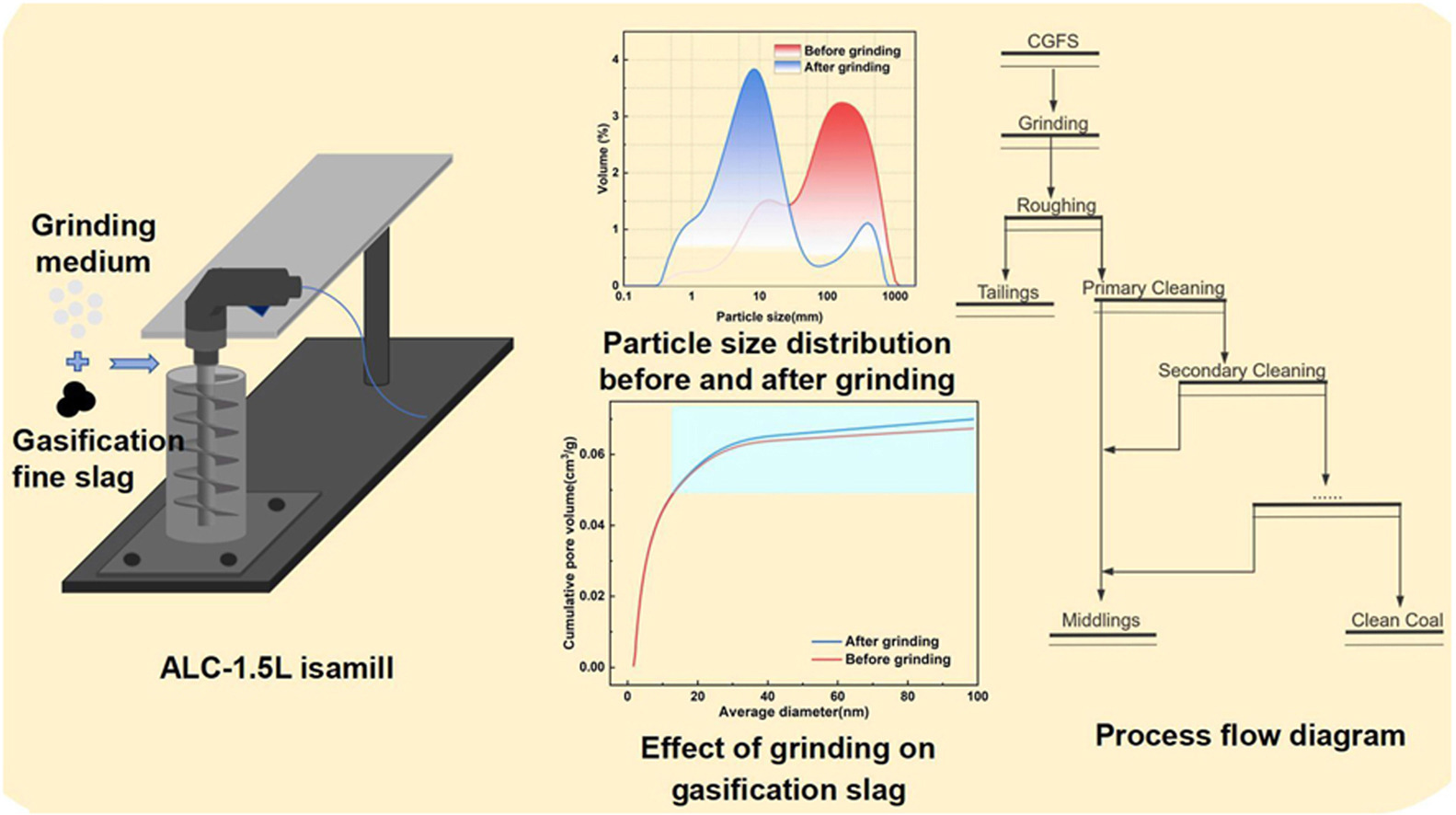• Pre-grinding was innovatively adopted for coal gasification fine slag pretreatment.
• SEM, BET, and laser particle size analysis were employed to evaluate grinding effectiveness.
• The method of multi-stage flotation was adopted.
• A clean coal ash content of 16.96 % and a tailing loss on ignition (LOI) of 2.29 % were achieved.
The paper focused on the fine-grinding pretreatment of coal gasification fine slag (CGFS) from gasification settling tank in Shaanxi Yulin, China. The mechanism by which grinding promotes the flotation performance of CGFS was explored through particle size distribution analysis, surface morphology examination, and porosity analysis. A multi-stage flotation process was employed to determine the optimal flotation regime. The experimental results demonstrated that grinding significantly reduced the overall particle size and improved the structure and composition of CGFS. After grinding, the particle size D [4, 3] decreased to 47.612 μm, and the average pore diameter increased by 0.1335 nm. The grinding process effectively dissociated the glassy intergrowth structures, resulting in a significant reduction in reagent consumption. With a compound collector dosage of 9 kg/t and frother dosage of 3 kg/t, the optimized flotation process—including one roughing stage and three cleaning stages—yielded a clean coal ash content of 16.96 % and a tailing loss on ignition value of 2.29 %, meeting the standards for Class I fly ash.

